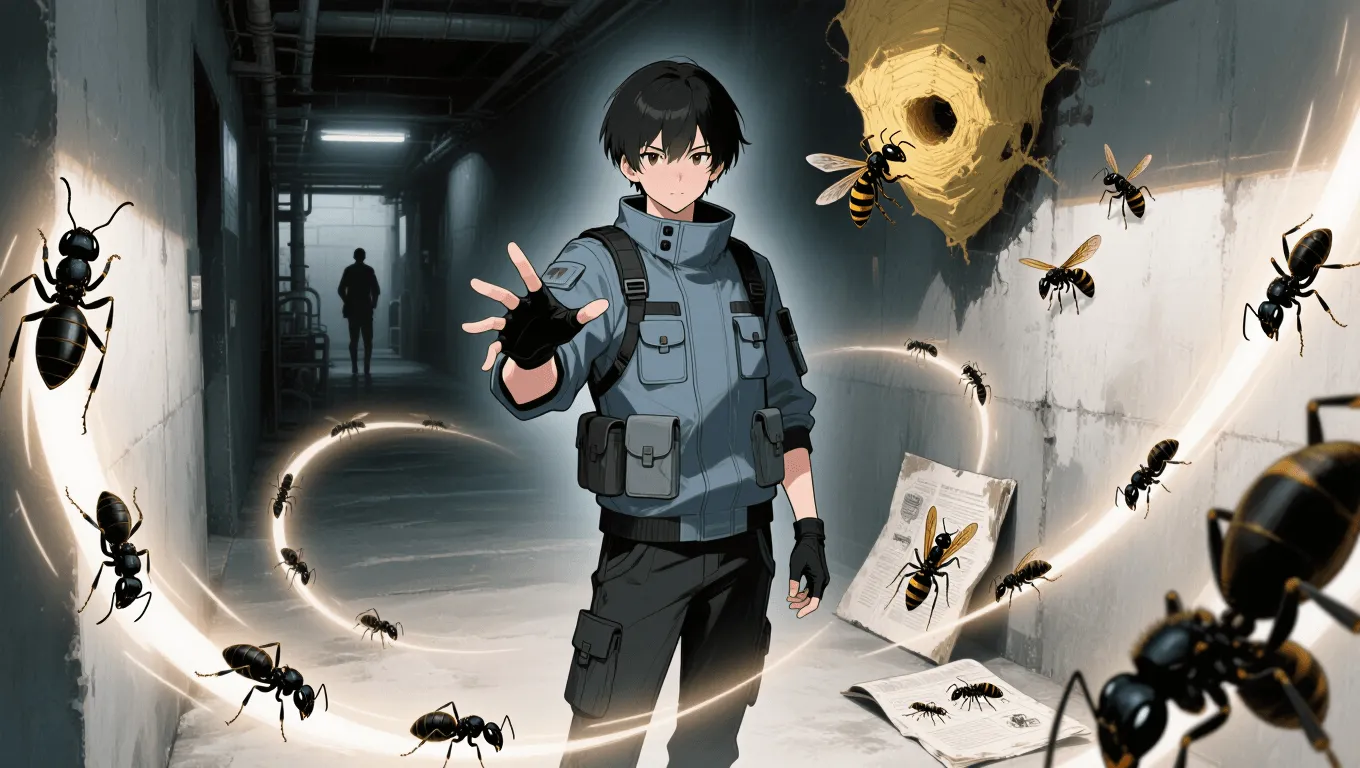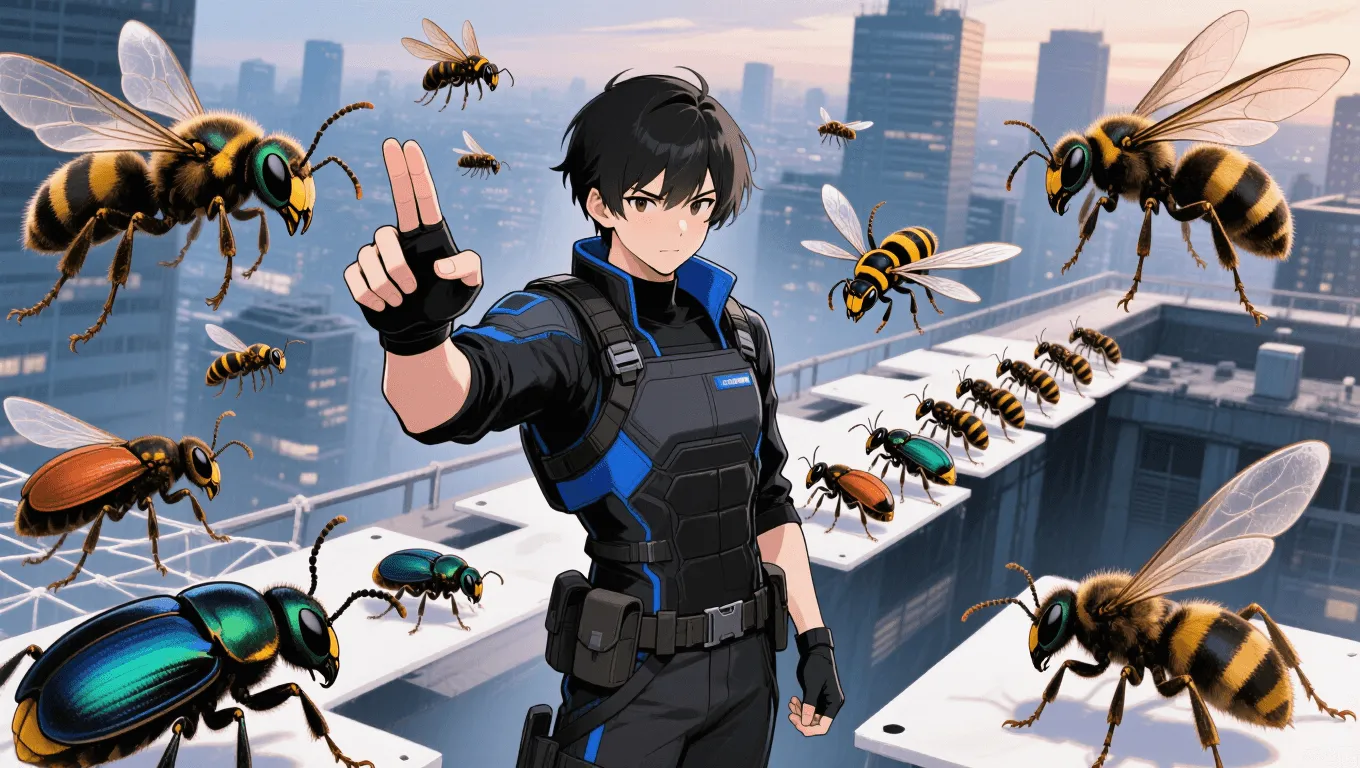Insect Manipulation | Entokinesis

Insect Manipulation | Entokinesis Video Demo 🎬
Table of Contents
- Insect Manipulation | Entokinesis Video Demo 🎬
- What Is Insect Manipulation | Entokinesis
- Core abilities of Insect Manipulation | Entokinesis
- Application / Tactical Advantages in Combat
- Level: Level 1 🏙️, Level 2 🌇, Level 3 🌃
- Limitations of using the Insect Manipulation | Entokinesis
- Weakness against what other superpowers
- Synergistic Power Combos
- Known Users
Insect Manipulation | Entokinesis is the superhuman ability to perceive, command, and weaponize insect life—often called entomokinesis, insect control, or swarm command. Practitioners direct ants, bees, beetles, wasps, and other arthropods through pheromone influence, bio-telepathy, or hive-mind links, turning tiny organisms into reconnaissance teams, living shields, and precision strike forces. This guide breaks down how the power works, where it shines in combat, its levels, natural limitations, counters, and notable characters who use it.
What Is Insect Manipulation | Entokinesis
At its core, Insect Manipulation | Entokinesis enables a user to interface with insect neurobiology and behavior. Some users project commands like telepathic impulses; others exude synthetic pheromones or “translate” insect communication into actionable orders. Advanced users heighten the swarm’s coordination until it behaves like a single organism—a mobile, adaptive tool for scouting, sabotage, and battle.
Because insects are everywhere—in soil, air, wood, water margins, and urban crevices—this power thrives in most environments. From guiding a column of ants through ventilation shafts to launching a wall of stinging wasps, entokinesis turns the battlefield into a living, shifting terrain.
For more abilities like this, explore the evolving catalog on the superpower wiki. Want a surprise ability for your next character build? Try the random superpower generator.
Core abilities of Insect Manipulation | Entokinesis
Swarm summoning and command
Users can call, rally, and disperse large numbers of insects. Commands range from simple (“gather here,” “block this doorway”) to complex (“form a moving shield,” “chew through cable insulation but leave the copper intact”). The strongest practitioners maintain control over multiple swarms at once and can re-task them mid-mission.
Pheromone control and behavioral steering
Pheromone-based entokinesis allows precise manipulation of foraging, aggression, and defensive behaviors. By modulating chemical “messages,” a user can calm angry colonies, spur rapid nest construction, or direct a hive to adopt a new queen-like focus—the user. This approach is subtle, resilient to noise, and ideal when stealth matters.
Sensory sharing and recon
Many insects excel at detecting vibration, heat, air currents, and trace chemicals. With a sensory link, the user can “ride along” through compound eyes and trichoid hairs, mapping rooms, counting footsteps, or sniffing out explosives. A scattered micro-scout network can outperform drones in tight spaces, giving near-omniscient situational awareness.
Micro-engineering and chitin constructs
Certain users instruct wood-borers, termites, or weaver ants to fabricate temporary structures: rope-like bridges, patchwork shields, and even crude “bandages” of silk or resin. Others compact abandoned exoskeletons into layered chitin plates that function as light armor. While not equivalent to steel, these constructs excel at rapid, field-expedient problem solving.
Venom channeling and targeted deployment
Through fine control, users direct stinging insects to inject or merely threaten. Non-lethal tactics include localized swelling to hinder grips, micro-injections to sedate guards (via naturally mild venoms), or synchronized “warning taps” for intimidation. Expert tacticians avoid collateral harm by setting strict no-sting parameters except on command.
Arthropod breadth and specialization
“Entokinesis” often extends to arachnids and crustaceans in fiction, though focus varies by user. Some are ant-and-bee specialists; others command spiders for silk and stealth, or mantis shrimp for aquatic ambushes. Specialization shapes tactics—burrowing beetles are saboteurs, while dragonflies provide aerial interception.
Application / Tactical Advantages in Combat
-
Area denial and crowd control: Dense clouds of stingers force opponents to retreat, cover their faces, or break formation. Ant swarms harass ankles and joints, disrupting footwork and lowering mobility.
-
Stealth infiltration: Cockroaches, ants, and silverfish traverse vents and conduits, unlocking doors (via micro-tools or cord-pulling), cutting power by chewing insulation, or planting trackers.
-
Reconnaissance supremacy: Hundreds of insect “cameras” relay a 360° picture of corridors, rooftops, and blind corners. The user anticipates ambushes and plans routes with near-zero profile.
-
Soft-target disabling: Coordinated stings at wrists, eyelids, and exposed necks impair aim and induce panic. Precision tactics minimize lasting harm while swiftly ending fights.
-
Psychological warfare: Many foes have deep-seated aversions to swarms. Even trained combatants may break discipline under the sensation of crawling, buzzing life.
-
Adaptive shielding: A thick, rotating “ball” of bodies blunts shrapnel, obscures optics, and confuses targeting algorithms, buying time to reposition.
-
Ecological logistics: Swarms carry micro-loads—keys, fibers, filaments—to rig tripwires, deliver antitoxin vials, or stitch lightweight barricades.
Level: Level 1 🏙️, Level 2 🌇, Level 3 🌃
Level 1 — Novice Swarmcaller

-
Scope: Dozens to a few hundred insects; typically a single species within line of sight.
-
Feats: Call nearby ants to scout a corridor; disperse a wasp nest safely; create short-lived diversions.
-
Limiters: Control drops with distance; storm winds, smoke, and loud machinery confuse orders; complex tasks fail without continuous focus.
-
Training focus: Pheromone basics, steady breathing under sensory noise, species identification for urban and rural settings.
Level 2 — Field Tactician

-
Scope: Thousands of insects, multi-species coordination, reliable control beyond line of sight using pheromone “waypoints.”
-
Feats: Maintain a roaming recon mesh across a city block; form temporary chitin plates; orchestrate precisely timed non-lethal stings against multiple targets.
-
Limiters: High cognitive load; resource dependence (needs local populations); difficulty in sterile environments.
-
Training focus: Delegation via “squad leaders” (queen or dominant individuals), preplanned routes, hand signals that map to pheromone profiles for rapid re-tasking.
Level 3 — Hive Sovereign

-
Scope: Tens of thousands or an entire colony network; persistent hive-mind link; complex construction tasks under combat stress.
-
Feats: Raise mobile walls of bodies; choreograph spider-silk nets mid-fight; run multi-theater recon across rooftops, sewers, and vents; modulate aggression like a dimmer switch.
-
Limiters: Ethical stakes escalate; collateral ecology can be disrupted; overconfidence invites counters like fire, cold, and toxins.
-
Training focus: Fail-safes to abort aggression, inoculation against sensory overload, rapid species-switching when counters appear (e.g., swap wasps for burrowers under high wind).
Limitations of using the Insect Manipulation | Entokinesis
-
Environmental dependence: Deserts at midday, arctic zones, or heavily sterilized labs offer few insects. Populations dip in heavy rain, extreme cold, and pesticide-saturated zones.
-
Range and signal noise: Long-distance control attenuates. Engines, industrial vibrations, and ultrasonic devices corrupt cues, especially for sound- and vibration-sensitive species.
-
Cognitive bandwidth: Each micro-order adds load. Sustaining complex patterns across thousands of organisms risks headaches, vertigo, and misfires.
-
Collateral sensitivity: Many insects are ecologically essential. Reckless use harms pollination and local biodiversity. Responsible users prioritize reversible, non-lethal tactics.
-
Infrastructure barriers: Airtight rooms, HEPA filtration, overpressure labs, and UV sterilizers block or kill entrants before a mission starts.
-
Species temperament: Not every species is trainable under stress. Some panic, disperse, or enter brood-guarding frenzies that override external commands.
Weakness against what other superpowers
-
Pyrokinesis: Fire and intense heat incinerate swarms and destroy silk constructs.
-
Cryokinesis and temperature control: Cold torpor disables flight and slows reaction times; frost ruins pheromone trails.
-
Aerokinesis: Gusts scatter formations, rip apart shields, and prevent coordinated swarming.
-
Chemical/toxin manipulation: Pesticide clouds, caustic mists, and oxidizers neutralize colonies rapidly.
-
Sonic or ultrasonic manipulation: Disruptive frequencies scramble movement, causing swarms to crash, disperse, or attack the wrong target.
-
Electrokinesis: Arcing discharges “bug-zap” aerial insects and can start fires in dry nests.
-
Force-field generation: Hard barriers negate infiltration and area denial.
-
Hydrokinesis: Torrents and pressure-wash effects drown or dislodge insects and erase pheromone trails.
-
Light/photokinesis: Intense strobes disorient nocturnal flyers and scatter formations that rely on low-light navigation.
Synergistic Power Combos
-
Plant Manipulation: Direct symbiosis—ants defend vines, vines offer pathways; carnivorous plants become living traps guided by swarms.
-
Earth Manipulation: Burrowers and termites reshape terrain; the user opens micro-tunnels or collapses enemy cover with minimal noise.
-
Poison Generation: Pair precision stings with tailored toxins for calibrated effects—from sleep to temporary paralysis.
-
Sound Manipulation: Replace chaotic noise with resonance cues that boost swarm cohesion and speed.
-
Size Alteration: Shrinking allows the user to ride insect scouts, perform infiltration alongside a trusted flyer, and escape via ant-dug routes.
-
Technopathy/Micro-drones: Hybrid teams of beetles and micro-UAVs combine organic stealth with digital relays for unjammable comms.
-
Healing/Biokinesis: Accelerate recovery of injured insects and stabilize colonies for sustainable, long-duration missions.
Known Users
-
Ant-Man (Hank Pym) — A scientist-hero who communicates with and commands ants using advanced technology, blending swarm tactics with size manipulation.
-
Swarm (comics) — A villain composed of and commanding bees, exemplifying offensive and defensive swarm architectures.
-
Red Bee — A crimefighter known for trained bees and creative micro-operations rather than brute force.
-
Shino Aburame — A strategist who deploys symbiotic insects for tracking, stealth, and precision strikes.
Browse more abilities related to insects, hives, and nature control in the superpower wiki or discover an unexpected build with the random superpower generator.
